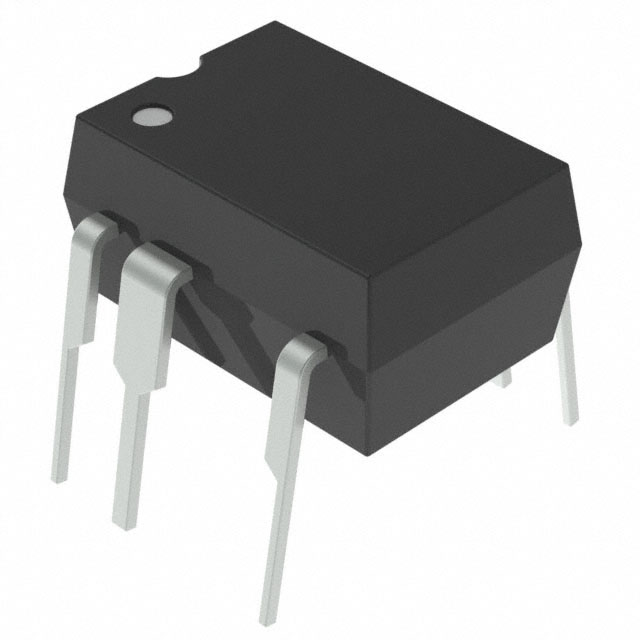5G Connectivity: Unraveling the Mysteries of RF Component Optimization for Faster Signals
2025/1/15 17:51:52
In the digital age, the pursuit of faster and more reliable wireless communication has been relentless. With the advent of 5G technology, a new era of high - speed, low - latency connectivity has dawned. At the heart of this revolutionary leap in communication capabilities lies the optimization of radio - frequency (RF) components. These components are the unsung heroes that enable the seamless transmission and reception of 5G signals, playing a crucial role in everything from enhancing mobile broadband speeds to enabling the Internet of Things (IoT) and autonomous driving applications.
1. The Significance of RF Components in 5G Networks
1.1 Basics of RF Components in Wireless Communication
RF components are the building blocks of any wireless communication system. They operate in the radio - frequency range, which spans from 3 kHz to 300 GHz, handling the transmission, reception, and modulation of electromagnetic signals. In a 5G network, RF components are responsible for converting the digital data from devices into RF signals that can be transmitted through the airwaves and vice versa.
Key RF components in 5G systems include antennas, power amplifiers, filters, and oscillators. Antennas are used to radiate and receive RF signals. In 5G, multiple - input multiple - output (MIMO) antenna systems are commonly employed, which can significantly increase the data throughput by using multiple antennas to transmit and receive signals simultaneously. Power amplifiers are essential for boosting the power of the RF signals to ensure they can travel over long distances. Filters are used to select the desired RF signals and reject unwanted noise and interference. Oscillators generate the stable RF signals required for the operation of other components.
1.2 Why RF Component Optimization is Crucial for 5G
5G technology promises much higher data transfer rates, lower latency, and the ability to support a massive number of connected devices compared to previous generations of wireless networks. However, achieving these goals requires a significant improvement in the performance of RF components.
The higher frequencies used in 5G, especially in the millimeter - wave (mmWave) bands (24.25 - 52.6 GHz), pose unique challenges. These frequencies have shorter wavelengths, which means they are more easily absorbed by obstacles such as buildings, trees, and even rain. As a result, the signals have a shorter range and are more prone to attenuation. To overcome these challenges, RF components need to be optimized to operate more efficiently at these high frequencies, with better power - handling capabilities, higher linearity, and improved signal - to - noise ratios.

2. Key Optimization Techniques for RF Components in 5G
2.1 Antenna Design and Beamforming
2.1.1 Advanced Antenna Designs
In 5G, the design of antennas has evolved significantly. Traditional omnidirectional antennas are being replaced by more sophisticated designs, such as phased - array antennas. Phased - array antennas consist of multiple antenna elements that can be individually controlled to adjust the direction and shape of the radiation pattern. This allows for more precise beamforming, which is crucial for 5G communication.
For example, in a 5G base station, a phased - array antenna can be used to direct the signal towards the user equipment (UE) with high precision. By adjusting the phase and amplitude of the signals transmitted from each antenna element, the antenna can create a narrow beam that follows the movement of the UE. This not only improves the signal strength and quality but also reduces interference with other devices.
2.1.2 Beamforming Technology
Beamforming is a key technique in 5G antenna systems. It enables the concentration of the RF energy in a specific direction, thereby increasing the signal - to - noise ratio and the range of the communication. There are two main types of beamforming: analog beamforming and digital beamforming.
Analog beamforming is achieved by adjusting the phase and amplitude of the RF signals at the antenna elements using analog components. It is a relatively simple and cost - effective method but has limitations in terms of flexibility. Digital beamforming, on the other hand, processes the base - band signals digitally before they are up - converted to the RF frequency. This allows for more precise control of the beam and the ability to adapt to changing channel conditions in real - time. For example, in a crowded urban environment, digital beamforming can be used to dynamically adjust the beam to avoid interference from other nearby 5G base stations.
2.2 Power Amplifier Optimization
2.2.1 High - Efficiency Power Amplifiers
Power amplifiers are one of the most power - consuming components in a 5G system. To improve the overall energy efficiency of the network, high - efficiency power amplifiers are essential. New materials and technologies are being developed to enhance the efficiency of power amplifiers.
For instance, gallium nitride (GaN) - based power amplifiers are gaining popularity in 5G applications. GaN has a higher electron mobility and breakdown voltage compared to traditional silicon - based materials. This allows GaN - based power amplifiers to operate at higher frequencies and power levels with higher efficiency. In addition, advanced circuit designs, such as Doherty power amplifiers, are being used to improve the efficiency of power amplifiers over a wide range of input powers.
2.2.2 Linearization Techniques
In 5G, power amplifiers need to have high linearity to ensure the accurate transmission of complex modulation signals. Non - linearities in power amplifiers can cause signal distortion, which can lead to a decrease in the data rate and an increase in bit - error rate. To address this, various linearization techniques are employed.
Predistortion is a commonly used linearization technique. It involves pre - distorting the input signal to the power amplifier in a way that compensates for the non - linearities of the amplifier. This can be achieved using digital signal processing algorithms. Another technique is feed - forward linearization, which uses a feedback loop to cancel out the distortion in the output signal of the power amplifier.
2.3 Filter Optimization
2.3.1 High - Performance Filters for 5G Frequencies
Filters are used to select the desired 5G signals and reject unwanted interference. In 5G, due to the use of high frequencies and the coexistence of multiple wireless services, high - performance filters are required.
Surface acoustic wave (SAW) filters and bulk acoustic wave (BAW) filters are two types of filters commonly used in 5G devices. SAW filters are suitable for lower - frequency applications in 5G, while BAW filters are more effective at higher frequencies. These filters are designed to have a high quality factor (Q), which means they can selectively pass the desired signals with minimal attenuation and reject unwanted signals.
2.3.2 Filter Integration and Miniaturization
To meet the size and cost requirements of 5G devices, filter integration and miniaturization are important trends. Multiplexers, which combine multiple filters into a single device, are being developed to reduce the number of components and the overall size of the RF front - end module. In addition, advanced manufacturing techniques, such as 3D printing and wafer - level packaging, are being used to miniaturize filters without sacrificing their performance.
3. Challenges in RF Component Optimization for 5G
3.1 Cost Constraints
The development and production of optimized RF components for 5G can be expensive. New materials, such as GaN, and advanced manufacturing processes are often more costly than traditional ones. The high cost of components can increase the overall cost of 5G infrastructure deployment and consumer devices, which may limit the widespread adoption of 5G technology.
However, as the demand for 5G components grows, economies of scale are expected to drive down the costs. Additionally, research is being conducted to find more cost - effective materials and manufacturing methods. For example, some companies are exploring the use of silicon - on - insulator (SOI) technology for RF components, which can offer a good balance between performance and cost.
3.2 Thermal Management
RF components, especially power amplifiers, generate heat during operation. In 5G systems, where components are required to operate at high power levels and frequencies, thermal management becomes a critical issue. Excessive heat can degrade the performance and reliability of RF components.
To address this challenge, advanced thermal management techniques are being developed. These include the use of heat sinks with improved thermal conductivity, liquid - cooling systems, and thermoelectric coolers. For example, some 5G base stations are equipped with liquid - cooled power amplifier modules to ensure efficient heat dissipation.
3.3 Interference Management
In a 5G environment, there is a high likelihood of interference from other wireless systems, both within the 5G frequency bands and from other nearby frequency bands. This interference can degrade the performance of 5G networks, reducing the data rate and increasing the latency.
To manage interference, advanced techniques such as interference cancellation, dynamic spectrum access, and cognitive radio are being explored. Interference cancellation algorithms can be used to subtract the interference signals from the received 5G signals. Dynamic spectrum access allows 5G devices to adaptively use the available spectrum based on the real - time interference situation. Cognitive radio technology enables 5G devices to sense the surrounding wireless environment and adjust their operating parameters accordingly.
4. The Future of RF Component Optimization in 5G and Beyond
4.1 Technological Advancements
Looking ahead, we can expect to see continued technological advancements in RF component optimization for 5G. Research is ongoing to develop even more efficient and high - performance components. For example, the development of new materials, such as two - dimensional (2D) materials like graphene and molybdenum disulfide, shows great potential for improving the performance of RF components. These materials have unique electrical and mechanical properties that could lead to the development of smaller, more efficient, and higher - performance RF components.
4.2 Market Growth and Applications
The market for 5G RF components is expected to experience significant growth in the coming years. As 5G networks are rolled out globally, the demand for high - quality RF components will increase. This growth will not only benefit the telecommunications industry but also drive innovation in other sectors. For example, in the automotive industry, 5G technology enabled by optimized RF components will play a crucial role in autonomous driving, vehicle - to - everything (V2X) communication, and in - car infotainment systems.
4.3 Integration with Emerging Technologies
RF components in 5G will also be increasingly integrated with emerging technologies. For instance, the integration of 5G with artificial intelligence (AI) and the Internet of Things (IoT) will require RF components to be more intelligent and adaptable. AI - powered algorithms can be used to optimize the performance of RF components in real - time, based on the changing network conditions and user requirements. In the IoT, 5G - enabled RF components will enable the seamless connection of a vast number of devices, from smart home appliances to industrial sensors.
The optimization of RF components is a critical factor in the success of 5G technology. Through advanced design techniques, innovative materials, and continuous research and development, RF components are being optimized to meet the demanding requirements of 5G networks. Despite the challenges in cost, thermal management, and interference management, the future of RF component optimization in 5G looks promising. As technology continues to evolve, we can expect to see even more significant improvements in 5G connectivity, enabling a wide range of applications that were previously unimaginable and contributing to a more connected and intelligent world.
Related information
Subscribe to IC-MAX!
Featured PartsMore

-
LNK304DN-TL Power Integrations

-
LNK304GN-TL Power Integrations

-
LNK304DG-TL Power Integrations
-
TNY277PN Power Integrations
-
TNY276PN Power Integrations
-
TNY278PN Power Integrations

-
TNY278GN-TL Power Integrations

-
TNY280GN-TL Power Integrations

-
TOP266KG-TL Power Integrations
-
TOP258PN Power Integrations
-
TOP253PN Power Integrations
-
TOP253PNAU Power Integrations







